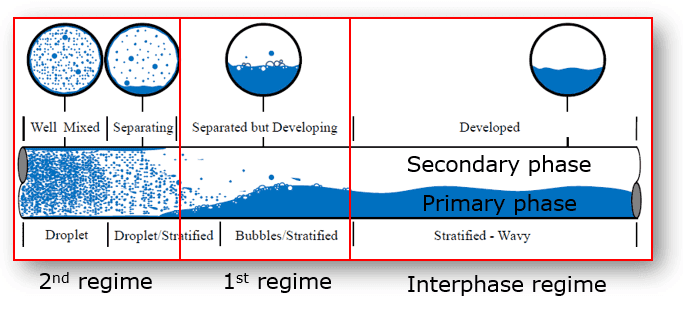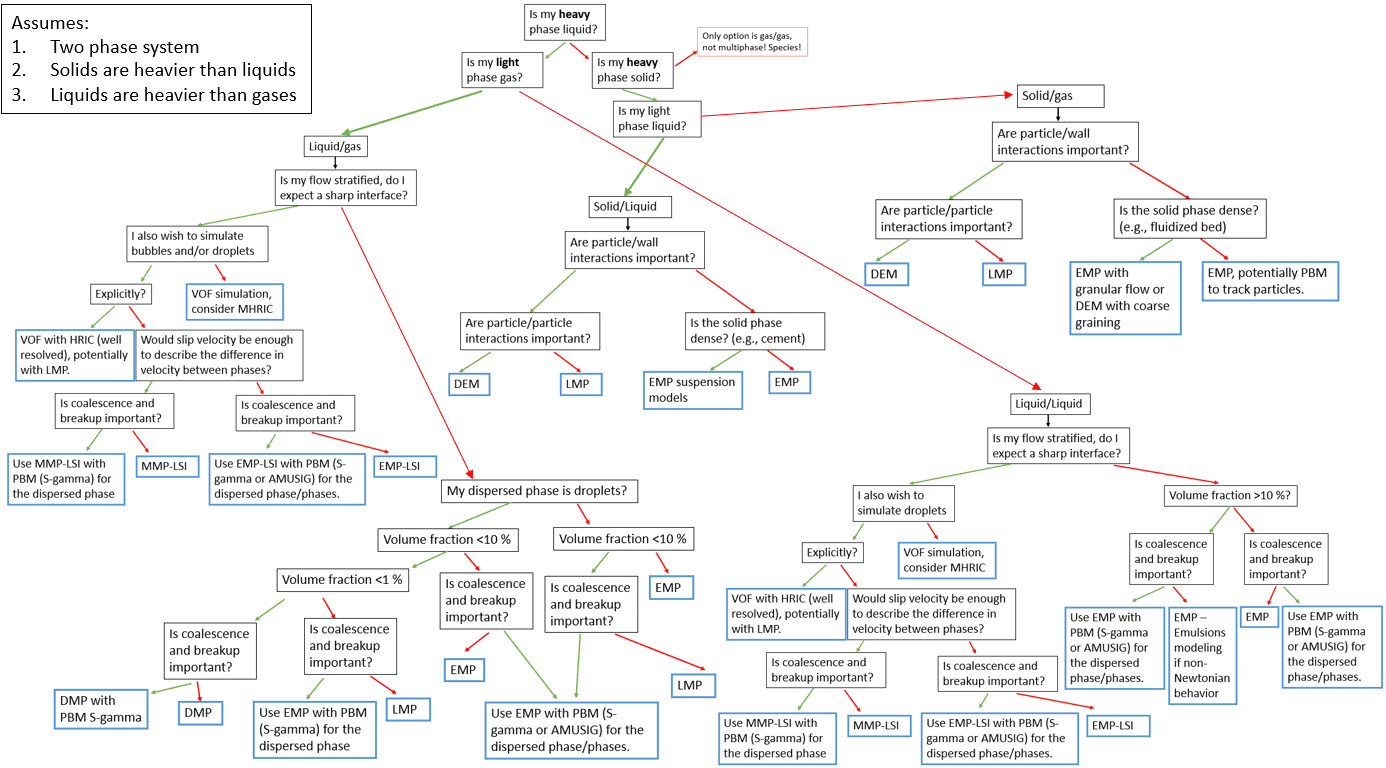In this week’s blog post I will go over what to consider when selecting the multiphase model in Simcenter STAR-CCM+. In general, it is evident for users experienced in their usual fields, what models to use. For instance, engineers working with ship hull resistance calculations in Simcenter STAR-CCM+ calculations do not usually need to consider what multiphase model to use. The model of selection is the VOF model. There are a few reasons for that, one being that the multiphase flow is stratified flow. But it might not be as simple as that when facing a new type of physics to simulate.
There are a couple of things to consider when selecting the multiphase model, or models, for your simulation. The main thing being flow topology. We have previously talked about multiphase modeling capabilities in Simcenter STAR-CCM+ and described what the different models are capable of performing [Multiphase modeling capabilities in Simcenter STAR-CCM+ – VOLUPE Software]. While that one describes capabilities of different models, this post is going to look at it from the other side. If I have a problem, how should I select my multiphase model?
In the Eulerian framework we consider a cell and track what enters and leaves that cell. In the Lagrangian framework, we follow a particle and consider how that affects and is affected by a continuous phase. Both these frameworks can to large extent do the same thing but does it vastly different. That is what we aim to understand in this blog post.
Phase interaction topology
In Simcenter STAR-CCM+, we are able to handle several different phase topologies. The biggest two differences being stratified flows, where we consider a strict separation with e.g., an interface between the phases. The most obvious example is the water surface of a still ocean, where the water and air above are completely separated. That example is good also because the applying motion to the air will affect the water and waves will start forming. When we reach a breaking wave, foam starts to form, and we enter another or an additional flow topology. The flow is no longer completely stratified. Droplets form and when the wave breaks, and we see droplets in water as well as air bubbles mixed in with the water. Both instances can be described as dispersed flow. Droplets dispersed in air, or bubbles dispersed in air. To completely describe this in Simcenter STAR-CCM+ we would need to refer to it as Multiple flow regimes. We now look at both stratified and dispersed flows. Or, if we wish to consider both a sharp interface and dispersed phases. While in theory we can track the water surface, and resolve both droplets in air together with bubbles in the water, this is extremely computationally expensive. This is because the length scales here are usually completely different. Our problem now requires a method that can deal with several flow topologies, and the VOF method is not that.
Multiples flow regimes
We are now talking about a first regime, a dispersed regime, where the secondary phase is dispersed in the primary phase. We have a Second regime, another dispersed regime, where the primary phase is dispersed in the secondary phase. And in between those we have the interphase regime, where both phases are separated. The picture below shows an example of this.

If we consider this as three separate problems, that should be simulated individually, there are several good fits in the model selection in Simcenter STAR-CCM+ that will help you.
- The second regime: droplets are dispersed in air, can be simulated using EMP, MMP, LMP and DMP. All the models have some limits to when they should be used, except the EMP model. The limits usually relate to level of dispersion, or rather the fraction of the dispersed phase. The volume fraction for Lagrangian particle simulations (LMP) is recommended to keep <= 10 %. And if you use the DMP model the volume fraction instead should be kept at <= 1 %. As the concentration of the dispersed phase increases and takes you out of the recommended domain for LMP, the pure Eulerian frameworks, like MMP and EMP can be used. But if the fractions are within range for the Lagrangian framework, there are model selections in Simcenter STAR-CCM+ that will allow you to look at collisions and collision outcomes for droplets. This can be done using the NTC (No Time Counter) collision model.
- The Interphase regime can be simulated as we initially defined our problem of relatively still water, using the VOF method. A method specifically for tracking immiscible phases. But also, the MMP and EMP models can be used here, as they have sub-models that can handle Large Scale interphase detection. What if VOF doesn´t work? MMP-LSI – VOLUPE Software.
- In the first regime population balances can be employed Population balance in Simcenter STAR-CCM+ – VOLUPE Software. And while the Eulerian framework models does not explicitly model any particles, but instead use the volume fractions of the phases together with interaction length scale and area density Phase interaction topology, interaction area density and length scale – VOLUPE Software to model the interaction in the mean, you can still follow the relevant sizes in your simulation. You then look at relevant entities, like diameter, using the result of the mean interactions to look at mean quantities, like Sauter Mean Diameter in the different parts of your domain. One advantage of the population balance models is that they can handle coalescence and breakup, and especially for droplets in water, like we have in the first regime.
The full multiple flow regimes simulation is preferably done in the Eulerian framework, specifically in EMP. S-Gamma population balance can be used to cover the full multiple regime topology. This demands the combination of EMP-LSI (Large scale interface detection) in combination with the population balance model S-gamma in both of the Eulerian phases, to correctly describe the breakup and coalescence of droplets and bubbles.
But how do I choose?
That is what we will try to address now. Below you see a flow chart for this that hopefully can be used as the initial point in the selection. Not necessarily in the selection of each sub model in each model in the different frameworks. But at least the models (EMP, MMP, LMP, DMP, VOF, DEM) and the flow topology (stratified flow, dispersed flow, or multiple flow regime). Hybridization will have to come in at a later stage as well. We will do a couple of assumptions, shown in the picture below. We will limit ourselves to the phases of Newtonian gas, Newtonian liquids, and solid particles. You start at the top question, follow the green arow from the question if the answer is yes and the red arrow if the answer is no.

I hope this has been useful to you. The selection of multiphase can be a bit ambiguous, but with experience it becomes more and more evident what models to select. As usual, do not hesitate to reach out if you have any questions to support@volupe.com.
Author

Robin Victor
+46731473121
support@volupe.com